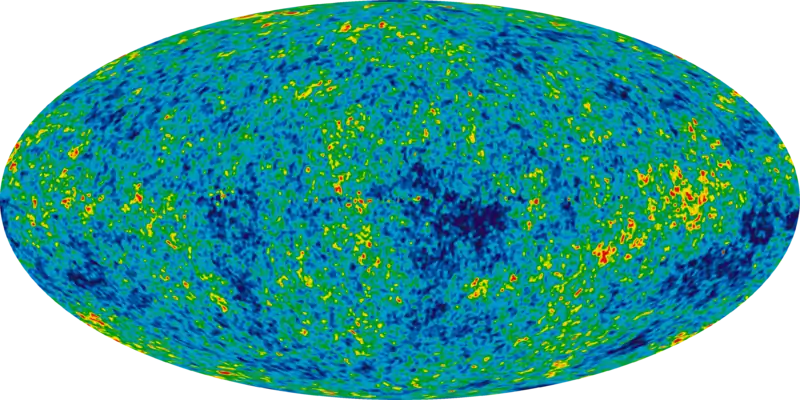Peryton (astronomy)
In radio astronomy perytons are short radio signals having a duration of a few milliseconds, detected only by the 64-meter Parkes radio telescope in Australia since 1998.[1][2] They are named after the Peryton, a mythical creature by Jorge Luis Borges.
Perytons were found to be the result of premature opening of a microwave oven door at the Parkes Observatory.
Outdated hypotheses
These signals mimic some aspects of fast radio bursts (FRB) that appear to be coming from outside the Milky Way galaxy,[3][4] but their astronomical origin was soon excluded.[5][6][7] Hypothesized potential sources of perytons included:[8][9]
- Signals from aircraft
- Flashes in the ionosphere
- Lightning
- Solar flares
- Terrestrial gamma-ray bursts
- Narrow bipolar pulse. (These are electrical discharges between clouds at high altitude with a capacity of several hundred gigawatts.)
Identification
In 2015, perytons were found to be the result of premature opening of microwave oven doors at the Parkes Observatory. The microwave oven releases a frequency-swept radio pulse that mimics an FRB as the magnetron turns off.[2][10]
References
- Hall, S. (May 12, 2015). "Microwave Ovens Spark Radio Signals". Sky & Telescope. Retrieved 2015-12-25.
The reason dates back 17 years, when astronomers first spotted fleeting bursts of radio signals in their data.
- Gilster, P. (April 6, 2015). "Puzzling Out the Perytons". Centauri Dreams. Retrieved 2015-12-25.
- Burke-Spolaor, S.; Bailes, M.; Ekers, R.; Macquart, J.-P.; Crawford III, F. (2011). "Radio Bursts with Extragalactic Spectral Characteristics Show Terrestrial Origins". The Astrophysical Journal. 727 (1): 18. arXiv:1009.5392. Bibcode:2011ApJ...727...18B. doi:10.1088/0004-637X/727/1/18. S2CID 35469082.
- Bagchi, M.; Nieves, A. Cortes; McLaughlin, M. (2012). "A search for dispersed radio bursts in archival Parkes Multibeam Pulsar Survey data". Monthly Notices of the Royal Astronomical Society. 425 (4): 2501–2506. arXiv:1207.2992. Bibcode:2012MNRAS.425.2501B. doi:10.1111/j.1365-2966.2012.21708.x. S2CID 118723247.
- Saint-Hilaire, P.; Benz, A. O.; Monstein, C. (2014). "Short-duration Radio Bursts with Apparent Extragalactic Dispersion". The Astrophysical Journal. 795 (1): 19. arXiv:1402.0664. Bibcode:2014ApJ...795...19S. doi:10.1088/0004-637X/795/1/19. S2CID 118369831.
- Katz, J. I. (2014). "What Perytons are not, and Might Be". The Astrophysical Journal. 788 (1): 34. arXiv:1403.0637. Bibcode:2014ApJ...788...34K. doi:10.1088/0004-637X/788/1/34. S2CID 118642445.
- Kulkarni, S. R.; Ofek, E. O.; Neill, J. D.; Zheng, Z.; Juric, M. (2014). "Giant Sparks at Cosmological Distances?". The Astrophysical Journal. 797 (1): 70. arXiv:1402.4766. Bibcode:2014ApJ...797...70K. doi:10.1088/0004-637X/797/1/70. S2CID 34705804.
- Bushwick, S. (April 22, 2015). "Mysterious Radio Bursts Are Indeed Coming From A Galaxy Far, Far Away". Popular Science. Retrieved 2016-05-05.
- Danish Khan, M. (2014). "Perytons and their Possible Sources". arXiv:1404.5080 [astro-ph.HE].
- Petroff, E.; Keane, E. F.; Barr, E. D.; Reynolds, J. E.; Sarkissian, J.; Edwards, P. G.; Stevens, J.; Brem, C.; Jameson, A.; Burke-Spolaor, S.; Johnston, S.; Bhat, N. D. R.; Kudale, P. C. S.; Bhandari, S. (2015). "Identifying the source of perytons at the Parkes radio telescope". Monthly Notices of the Royal Astronomical Society. 451 (4): 3933–3940. arXiv:1504.02165. Bibcode:2015MNRAS.451.3933P. doi:10.1093/mnras/stv1242. S2CID 118525156.
External links
- What is a peryton? At Physics SE
